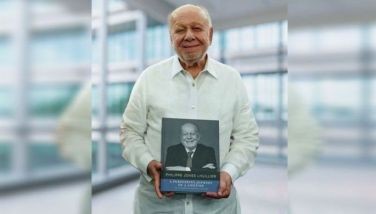Do you know me?
Bill never knew how he ended up with twice the cattle he had before. He only left for a few minutes to heed nature’s call, but when he returned, the cattle he was herding became twice as many. Bill was a friend of mine from Texas who told me this hilarious story of what happened the second day of his volunteer stay in rural India. He also told me that he did not know what made him do it but he got a twig and with it, reached out to each cow by touching its cheek one after another asking in his Texan accent, “Do you know me?”
When he told me that story, I was not sure whether to feel sorry for Bill or the cows. Now, I found an experiment that shows evidence that not only humans can recognize particular humans from a crowd. Other species seem to be able to recognize particular members of their own species in a herd. While this is something that we seem to take for granted, it has not been tested in other species. This experiment, I just found, has shown this to be true for horses. If it later turns out to be true for cows as well, Bill could have just asked the cows if they knew each other. He could have ended up with his original herd in no time and deducted one less embarrassing episode from his life.
If you were lost in a crowd and the love of your life called you, you match that voice with the information in your head. That stored information may have been previously fed by your other senses — sight, touch, smell and emotional tags. Then, you look for that person guided by that voice-information match, and then you recognize the sight of the one whom you initially only heard. For the longest time, it was thought that only humans are capable of this kind of complex recognition called “cross-modal” (since it crosses the senses). But now a study in the Proceedings of the National Academy of Sciences last Jan. 20, 2009 called Cross-modal Individual Recognition in Domestic Horses (Equus caballus) by Leanne Proops, Karen McComb, and David Reby of the Department of Psychology, School of Life Sciences, University of Sussex in the UK, proved that horses also can differentiate between a herd member and a stranger.
The design of the experiment was simple and elegant. I can appreciate the kind of thinking that went to this experiment because this kind of simplicity is often difficult to achieve with most kinds of animals. But they did it. The researchers first had the horses watch a herd member being led past them before that particular horse went out of view. After that, a call from that same herd member or a different one was played from a loudspeaker positioned close to the spot where the herd member went out of view of the other horses. When horses were shown one horse and then the call of a different horse was played, they “responded more quickly and looked significantly longer in the direction of the call than when the call matched the herd member just seen.” The researchers noted that this difference proves that the horses recognize the difference.
This experiment showed that humans are not alone in being able to tell a stranger from familiar company. It turns out that the scientists also think it is not just horses who share this “power.” What is it in the brain that makes it capable of matching different kinds of sensory information, arriving at individual recognition? The researchers think that our “primate brain” — the ones we share with others of the same Order such as apes, Old World Monkeys and New World Monkeys — has the power to integrate audiovisual information. But the research also cited previous studies that suspect that a brain, even if it is not that of a primate, as long as it has a neocortex, could be capable of some form of this integration and as such, this “power” could be exhibited by all mammals. This means that even hamsters can match a scent with the image of their comrade.
It is a no-brainer that your dogs can recognize you in a crowd when he or she hears you. I think they easily belong with those animals that scientists found to be capable of matching the voice with the image of their human caretakers in lab-based trials. I think this is also the reason why Trevor, a golden retriever, did not attack my neighbor even as my neighbor vigorously chastised him one night.
This is how it happened. My neighbor was heard screaming: “Ampon ka lang! Bumalik ka na sa inyo! (You are merely adopted! Go back to your own house!)” Trevor’s official address is a house at the farther end of my street but as far back as I could remember, he has always preferred to live in this house across mine where he has been having a sort of a soulmate kind of platonic relationship with a German shepherdess who lives there. When being reminded he was merely adopted, Trevor must have muttered beneath his breath “but aren’t all dogs adopted?” My neighbor has always taken care of Trevor like his own — feeds, bathes and walks him. One day, Trevor unexpectedly decided to treat the drying shirt of my neighbor like a giant gum and chewed it to tatters. My neighbor went ballistic, calling him all sorts of synonyms for “ungrateful.” But Trevor just took it all in, looking remorseful. He knows that it is not a stranger screaming at him. As of this writing, Trevor is still sharing the doghouse with the German shepherdess.
This column is a concoction of experiments and stories that reveal to us that some animals do recognize the individual presence of their own kind by matching their sound with the stored image of the “other” or with more (like smell), and for some, they even recognize individuals of other species. For so long, we humans thought we were the only ones who can do this. Now, we hold this illusion no more.
* * *
For comments, e-mail [email protected]
* * *
Note: Cafe Scientifique presents The Science of the Heavens: What’s Really Up There? What does it take to make a cloud? Are rainbows visions or only illusions? What is the real color of the sky? Physics educator Ivan Culaba will show us what really goes on up there and how to recreate them down here through fun and simple experiments. Hobbes and Landes Café, Bonifacio High Street, 4 to 6 p.m. This event is free and open to the public.
- Latest






























